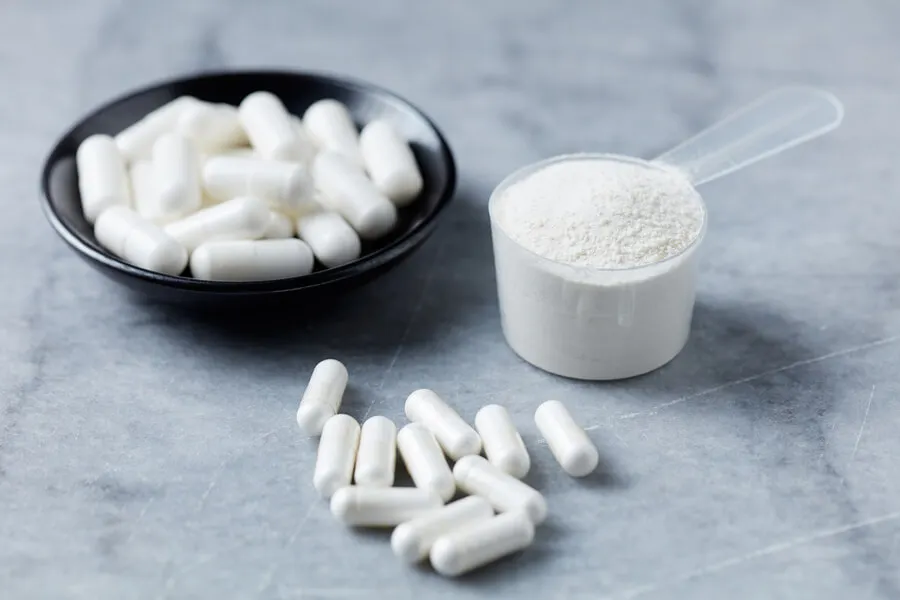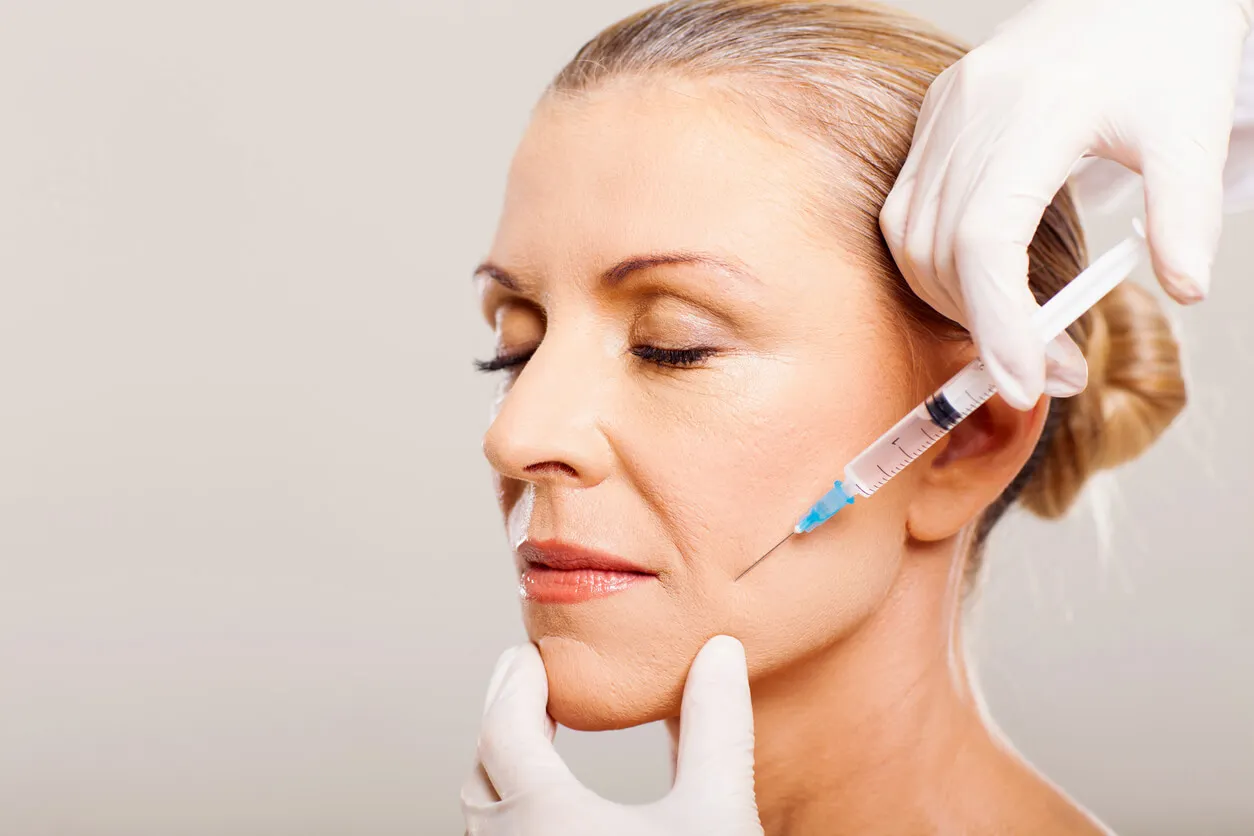Dermal Fillers: Benefits, Risks and Complications


Reviewed and approved by the nurse Leidy Mora Molina
Aesthetic medicine is an expanding business and there are more and more options to delay the signs of aging without the need for surgery. Dermal fillers are a sample. The use of these injectables is gaining strength, confronting wrinkles, camouflaging scars, and disguising hyperpigmentation.
When it comes to our faces, people look for possibilities that involve fewer risks and offer natural results. Treatments of this kind stand out for their almost immediate effects and for their non-invasive nature.
What are dermal fillers?
Dermal facial injectables or fillers are a type of aesthetic procedure whose objective is to rejuvenate the face, infiltrating special compounds to eliminate expression lines, change the appearance of the lips, and unify the skin tone.
By applying certain products, defects in the soft tissues are corrected, according to the International Society for Aesthetic Plastic Surgery. They are approved by the U.S. Food and Drug Administration (FDA) for use in people over the age of 22.
The FDA describes them as implants that help make the appearance of the face smoother. For this purpose, they transfer absorbable or temporary materials in skin injections.
Dermal fillers are also useful in the back of the hands.
Types of facial fillers
Aside from brand names, dermal fillers are classified according to how long they last on the skin:
- Temporary
- Semi-permanent
- Permanent
Another classification responds to the formulas, which mostly use ingredients such as those presented below. Read on to learn more.
Collagen
Through facial fillers with this compound, it’s possible to stimulate the natural collagen-producing fibers, so that touch-ups will be less necessary to preserve the elasticity of the skin.
The magazine Dermatología Argentina points out that collagen is a structural protein of the connective tissue and that its function is to provide mechanical support; an objective enhanced with the infiltration of the gel.

Hyaluronic acid (HA)
This glycosaminoglycan has a high molecular weight and is present in all body fluids and tissues, with the skin being its most extensive reservoir, as explained by Actas Dermo-Sifiliográficas.
HA acts as a moisturizer and to give flexibility. It’s suitable if you want to hide incipient wrinkles or add volume. Its great advantage is that it’s absorbed by the body.
Polylactic acid (PLA)
To create volume, PLA is injected just below the area showing imperfection. This acid is a temporary and biodegradable filler.
Sculptra®, one of the brands that offers the product in the market, points out that it’s commonly prescribed for the correction of deficiencies ranging from superficial to deep in the nasolabial fold and to attenuate other wrinkles.
Calcium hydroxyapatite
Calcium hydroxyapatite is a biocompatible material with diverse uses in medicine. In the aesthetic field, the component works as a collagen generator.
This aqueous gel is usually infiltrated to fill wrinkles and facial furrows. It is considered a long-lasting injectable, because it activates bone cells and connective tissue.
Read also: Learn How to Make an Anti-Wrinkle Night Cream with Grapeseed Oil
ArteFill ® is a gel composed of millions of synthetic microspheres suspended in bovine collagen. The filler contains lidocaine, so that the injection is imperceptible.
ArteFill ® is a non-resorbable dermal solution, so it’s considered permanent and with extended long-term effects. In addition to addressing general wrinkles, its use thickens lips and combats acne scars.
Botulinum toxin doesn’t correspond to these dermal injections, because it doesn’t fill, but, rather, blocks the contraction of facial muscles.
Benefits of dermal fillers
In general, facial fillers restore the volume and elasticity that the years take away from the skin. The preference for these treatments is largely due to their benefits.
- Minimal after-effects: Side effects are mild compared to other aesthetic treatments.
- Subtle appearance: One of the purposes of dermal injections is to make the image look natural.
- Increase collagen production: Several fillers promote natural collagen production, which promotes skin health.
- They are non-invasive: The needles used to infiltrate the substances are tiny and the procedure is similar to an injection of medicine. They’re painless and don’t require anesthesia.
- They are personalized: The technique consists of adapting the filler to the needs of each individual skin. In fact, many of the infiltrated substances are produced naturally by the body.
- No need to rest: You don’t have to stop your routine after facial injections. A few precautions are enough. Avoid direct sunlight and the use of make-up during the days indicated by the professional. Cleanse and moisturize according to the instructions.

Risks and complications of injectable fillers
Dermal filler procedures performed under medical safety guidelines pose no major risks. However, side reactions such as redness, erythema or allergies are likely to occur. Although these signs are short-lived, if any of them worsen, then it’s imperative to see a physician.
On the other hand, patients with autoimmune diseases or immunosuppressed, pregnant, and lactating women, should not have dermal fillers. Actas Dermo-Sifiliográficas states that severe complications from facial rejuvenation injections are ischemic and could lead to blindness, stroke or Nicolau’s syndrome.
As suggested by the journal Cirugía Plástica, the surgeon and dermatologist should promptly identify any adverse effects in order to prescribe the appropriate medication or procedure to counteract them.
Discover more: Infiltrations: The Technique that Helps Relieve Pain and Injuries
Aspects to take into account before applying dermal fillers
After consultation and an analysis of the case, the specialist will specify the type of filler to be infiltrated. Those who use anti-inflammatory medication or have a history of keloids should notify the doctor, since in their cases these injections are not recommended.
Other advice is to go to an authorized service provider trained to apply dermal fillers, make sure they are pre-filled syringes, sealed and labeled by the country’s health authorities, as well as to know from the professional the type of product to be injected.
All cited sources were thoroughly reviewed by our team to ensure their quality, reliability, currency, and validity. The bibliography of this article was considered reliable and of academic or scientific accuracy.
- Bárcena Ruiz E, García Gavín J, Vargas Laguna E. Seguridad en los procedimientos dermatológicos: oclusión vascular por materiales de relleno. Actas Dermo-Sifilográficas. Vol. 112. Núm. 9. pp. 794-797. España; 2021. https://www.sciencedirect.com/science/article/pii/S1578219021002389?pes=vor
- Cuenca Pardo J, Ramos Gallardo G, Ramos Ramos K, Vélez Benítez E. Seguridad en la aplicación de rellenos faciales. Medicina basada en evidencia. Cirugía Plástica. Vol. 29. Núm. 1. pp. 78-87. México; 2019. https://www.medigraphic.com/pdfs/cplast/cp-2019/cpi191d.pdf
- Dorta L, Lugo D, Martes M, Moreno M. Síndrome de Nicolau: a propósito de un caso. Revista Argentina de Dermatología. Vol. 97. Núm. 2. Argentina; 2016. http://rad-online.org.ar/2016/07/01/sindrome-de-nicolau-a-proposito-de-un-caso/
- García Garduño M, Reyes Gasga J. La hidroxiapatita, su importancia en los tejidos mineralizados y su aplicación biomédica. TIP Revista Especializada en Ciencias Químico-Biológicas. Vol. 9. Núm. 2. pp. 90-95. México; 2006. https://www.redalyc.org/pdf/432/43211937005.pdf
- Glucosaminoglicano. Diccionario Médico. Clínica Universidad de Navarra. España. https://www.cun.es/diccionario-medico/terminos/glucosaminoglicano
- Gómez de la Fuente E, Guerra Tapia A. El ácido hialurónico y sus aplicaciones en dermatología. Actas Dermo-Sifilográficas. Vol. 89. Núm. 9. pp. 435-443. España; 1988. https://www.actasdermo.org/es-el-acido-hialuronico-sus-aplicaciones-articulo-13003360
- Inyecciones de ArteFill. Cirugía Plástica y Estética. Sociedad de Cirugía Plástica. Perú. http://www.sociedadcirugiaplasticaperu.com/inyecciones-artefill.htm
- Liu H, Beynet P, Gharavi M,. Overview of Deep Dermal Fillers. Facial Plast Surg 2019; 35(03): 224-229. DOI: 10.1055/s-0039-1688843
- Pastore F. El colágeno hidrolizado enlentece el envejecimiento cutáneo. Dermatología Argentina. Vol. 27. Núm. 4. Argentina; 2021. https://www.dermatolarg.org.ar/index.php/dermatolarg/article/view/2285
- Qué hacer y qué no hacer con los rellenos dérmicos para las arrugas, los labios y otras partes. Administración de Alimentos y Medicamentos. Estados Unidos; 2022. https://www.fda.gov/consumers/articulos-para-el-consumidor-en-espanol/que-hacer-y-que-no-hacer-con-los-rellenos-dermicos-para-las-arrugas-los-labios-y-otras-partes#:~:text=Los%20rellenos%20d%C3%A9rmicos%20son%20sustancias,rellenos%20d%C3%A9rmicos%20como%20dispositivos%20m%C3%A9dicos
- Rellenos dérmicos. Rellenos de tejidos blandos. Administración de Alimentos y Medicamentos. Estados Unidos; 2021. https://www.fda.gov/medical-devices/aesthetic-cosmetic-devices/rellenos-dermicos-rellenos-de-tejidos-blandos
- Rellenos dérmicos. Sociedad Internacional de Cirugía Plástica Estética. Estados Unidos. https://www.isaps.org/es/procedimientos/procedimientos-no-quirurgicos/implantes-de-rellenolos/
- Sculptra ®. Estados Unidos; 2022. https://www.sculptrausa.com/
This text is provided for informational purposes only and does not replace consultation with a professional. If in doubt, consult your specialist.








